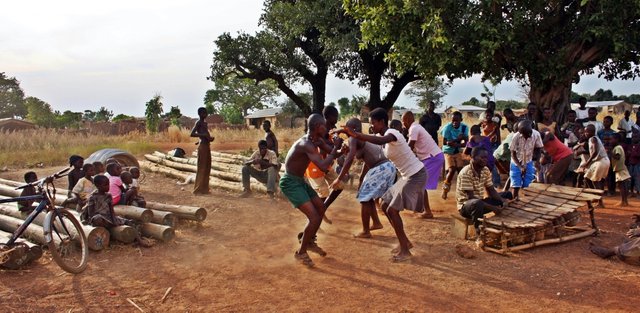What Do you know about the Dagaaba people? (1)

The Dagaaba people (singular Dagao, and, in northern dialects, Dagara for both plural and singular) are an ethnic group in the African nations of Ghana, Burkina Faso and Cote d'Ivoire. They speak the Dagaare language, made up of the related Northern Dagaare dialects, Southern Dagaare dialects, a number of sub dialects. In northern dialects, both the language and the people are referred to as Dagara. They are related to the Birifor people and the Dagaare Diola. The language is collectively known as Dagaare (also spelled and/or pronounced as Dagare, Dagari, Dagarti, Dagaran or, Dagao) and historically some non-natives have taken this as the name of the people. One historian, describing the former usage of "Dagarti" to refer to this community by colonials, writes : "The name 'Dagarti' appears to have been coined by the first Europeans to visit the region, from the vernacular root dagaa. Correctly 'Dagari' is the name of the language, 'Dagaaba' or 'Dagara' that of the people, and 'Dagaw' or 'Dagawie' that of the land."
Although sometimes divided into Northern and Southern Dagaare speakers, their combined population was estimated in 2003 at over one million spread across the Northwest corner of Ghana and Sud-Ouest Region in Southwestern Burkina Faso. The Southern Dagaare are a people of around 700,000 living in the western part of Upper West Region. The Northern Dagaare speakers, with an estimated population of 388,000 (in 2001) live primarily in Ioba Province, but also in Poni, Bougouriba, Sissili, and Mouhoun provinces. In Ghana, several waves of internal migration, beginning with the start of colonial rule in the late 19th century (but possibly having been begun sooner) and spiking in the 1980s, have brought a sizable Dagaaba population to towns in the southern part of the nation, notably Brong Ahafo Region. In modern Ghana, the Dagaaba homeland of the Upper West Region includes the Districts and towns of Nandom, Lawra, Jirapa, Kaleo,Papu, Nadowli, Daffiama, Wechiau and Hamile. Large communities are also found in the towns of Wa, Bogda, Babile, Tuna, Han and Nyoli.
The source of Dagaaba communities in the pre-colonial era remain a point of debate. The evidence of oral tradition is that the Dagaaba are an outgrowth of the Mole-Dagbani group which migrated to the semi-arid Sahel region in the fourteenth century CE. They are believed to have further migrated to the lower northern part of the region in the seventeenth century. From well before the appearance of Europeans, the Dagaaba lived in small scale agricultural communities, not centralised into any large state-like structure. Ethnological studies point to oral literature which tells that the Dagaaba periodically, and ultimately successfully, resisted attempts at conquest by states in the south of modern Ghana, as well as the Kingdoms of Dagbon, Mamprugu and Gonja in the north. One thesis based on oral evidence is that the Dagaaba formed as a break away faction of Dagbon under Na Nyanse. The colonial borders, demarcated during the Scramble for Africa, placed them in northwestern Ghana and southern Burkina Faso, as well as small populations in Ivory Coast.
Dagaaba communities have occasionally come into conflict with neighbouring groups, especially over land rights, as recently as the 1980s with the Sisala people and at earlier times with the Wala people. The latter, in alliance with the Wassoulou Empire of Diola Samory Toure, conquered much of Dagawie in the late 1890s, under the generalship of Sarankye Mori.
Within the Dagawie homelands, the Dagaaba have traditionally formed sedentary agricultural communities. Modern Dagaaba lineages consist of ten clans encompassing over one million people.
Source: Wikipedia
Posted from my blog with SteemPress : https://northernghana.net/2018/06/23/what-do-you-know-about-the-dagaaba-people-1/
➜@bible.com